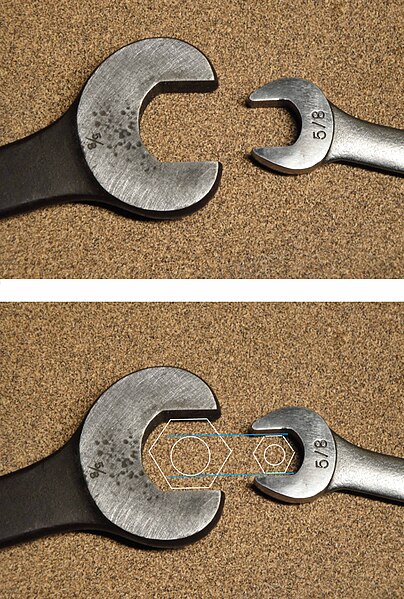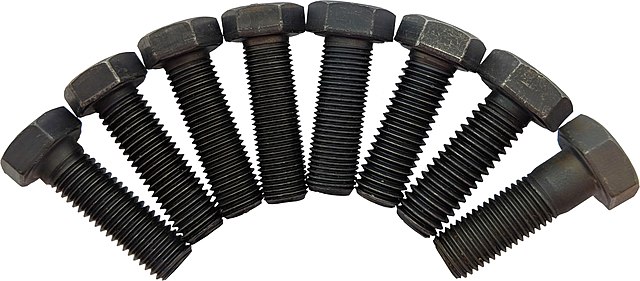British Standard Whitworth
British Standard Whitworth (BSW) is an imperial-unit-based screw thread standard, devised and specified by Joseph Whitworth in 1841 and later adopted as a British Standard. It was the world's first national screw thread standard, and is the basis for many other standards, such as BSF, BSP, BSCon, and BSCopper.
Two spanners, both nominal size 5⁄8 in, with a diagram superimposed to show the logic that allows them both to be nominal size 5⁄8 in when their actual sizes are clearly different (across-flats distance vs screw diameter). The across-flats definition is the common standard today, and has been for many decades. The larger spanner in this photo is from the 1920s or earlier. Its face was polished to allow the size stamp to show well in the photograph. This example is American, but it illustrates the way that spanners for Whitworth fasteners were typically labelled.
A screw thread is a helical structure used to convert between rotational and linear movement or force. A screw thread is a ridge wrapped around a cylinder or cone in the form of a helix, with the former being called a straight thread and the latter called a tapered thread. A screw thread is the essential feature of the screw as a simple machine and also as a threaded fastener.
Screw thread, used to convert torque into the linear force in the flood gate. The operator rotates the small vertical bevel gear in the center. Through mechanical advantage this causes the horizontal bevel gears (at far left and far right, with threaded center holes) to rotate. Their rotation raises or lowers the two long vertical threaded shafts - as they are not free to rotate.
Different (and incompatible) threads including (from left) M12 left hand, standard M12, M12x1.5 (fine), M12x1.25 (fine), 1/2" UNF, 1/2" UNC, 1/2" BSW, and 1/2" BSF
Camshaft cover stud threaded 1⁄4-20 UNC (left, for aluminium cylinder head) and 1⁄4-28 UNF (right, for steel nut; from a 1960s Jaguar XK engine)
The three diameters that characterize threads





